
Fundamentals
The human journey, from its earliest moments, has been profoundly connected to the ways we adorn and care for our hair. A single strand of hair, seemingly simple in its biological make-up, carries within its very structure a deeply felt significance, an echo of ancestral whispers and communal bonds. Societal Hair Norms, at their most elemental, represent the unwritten codes and shared understandings that dictate acceptable, desirable, or even mandated ways individuals style, present, or perceive their hair within a given community or era.
This is not merely about personal preference; it speaks to the deeper collective agreements that shape our visual language and our place within the collective human experience. It is a designation that describes the collective expectations surrounding hair.
These collective expectations, often absorbed from infancy, begin to shape our understanding of beauty, propriety, and belonging. For communities with textured hair, particularly those of Black and mixed-race heritage, these norms are not abstract concepts but deeply lived experiences, often stretching back through generations of adaptation, resistance, and celebration. The significance of hair, therefore, extends far beyond superficial adornment; it becomes a powerful marker of identity, status, and cultural connection. The shared sense surrounding hair choices often forms a subtle, yet potent, framework for social interaction.
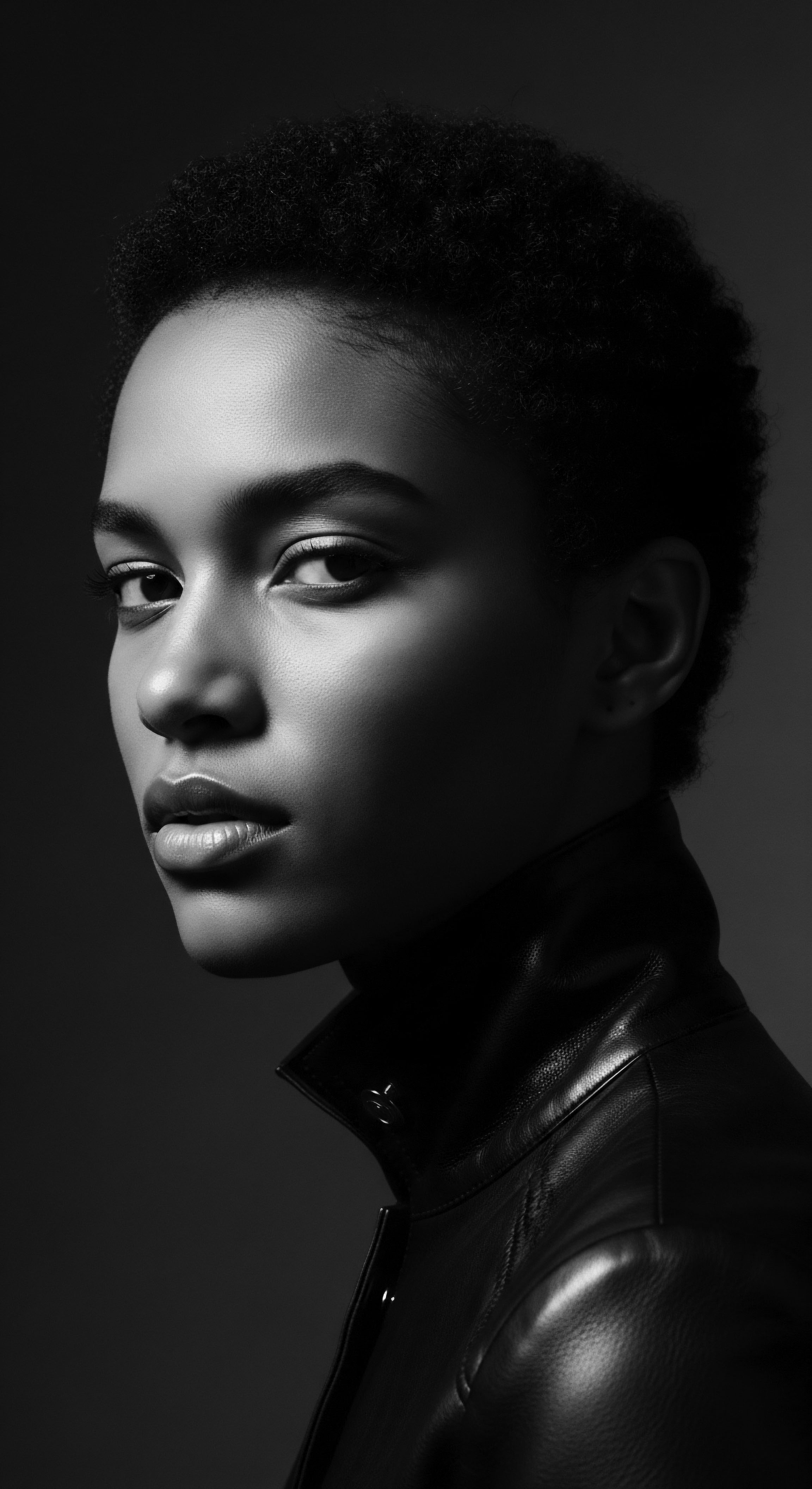
Hair as a Communal Language
From ancient African civilizations to indigenous communities across the globe, hair has long served as a vibrant lexicon, communicating complex information about a person’s life. Before the written word, elaborate braiding patterns, precise cuts, and detailed adornments spoke volumes. A young woman’s hair might signify her marital status, her age, or her readiness for rites of passage.
A warrior’s style could denote his victories in battle or his tribal allegiance. This long-standing tradition of hair as a form of non-verbal communication establishes a foundational understanding of societal hair norms as ancient, communal agreements.
Societal Hair Norms represent the unspoken agreements within a community regarding hair presentation, serving as a powerful, historically rooted form of collective communication.
The very meaning of hair, therefore, is not inherent in its biology but is ascribed by the collective. This cultural assignment of meaning gives hair its powerful role in social structures. The hair’s natural state or its meticulously crafted form often served as a visual declaration of one’s place within the community. The delineation of these roles, expressed through hair, created a rich cultural grammar.
The earliest communal hair practices were not just about appearance; they were about belonging, about conveying one’s story without uttering a single sound. For instance, among many West African groups, specific braided styles could identify a person’s village or family lineage, acting as a visual passport within their world.
The shared act of hair care itself also formed a significant part of these communal languages. Mothers would teach daughters, elders would impart wisdom to younger generations, and these moments of tender care often solidified social bonds. The tools, the oils, the very rhythm of the hands working through strands, all contributed to a shared understanding of what hair represented within that specific heritage. This ritualistic aspect imbued societal hair norms with a spiritual and familial dimension, extending their meaning beyond mere aesthetics to encompass a profound sense of continuity and connection.
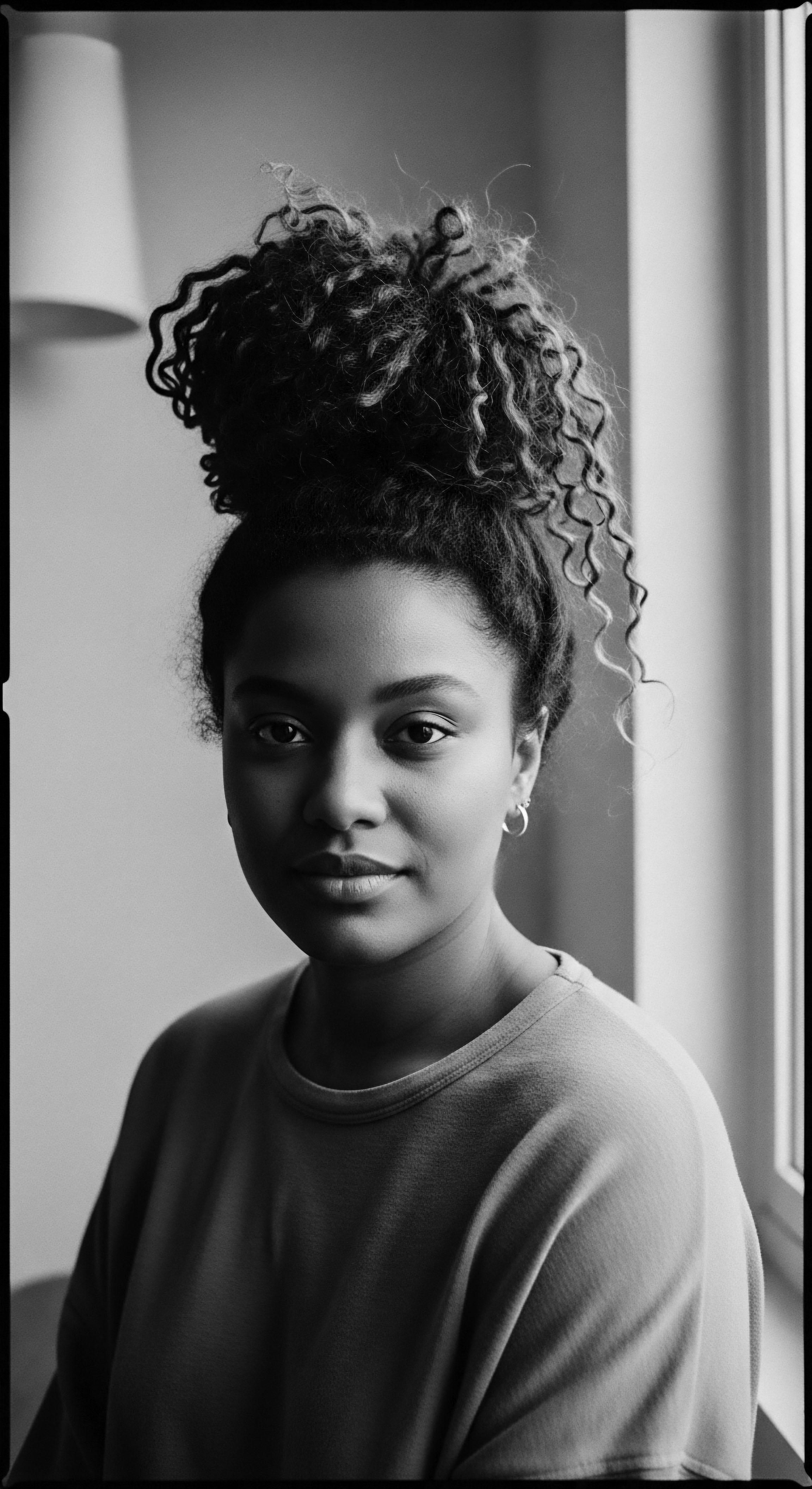
Early Markers of Identity
Consider the earliest known human societies, where practicality and symbolism intertwined. Hair care was not merely hygienic; it was a ritual, a communal gathering. The tools used, the ingredients applied, and the hands that tended the hair all spoke of shared heritage and collective knowledge.
These early societal hair norms were often born from environmental necessity, then imbued with spiritual and social import. The explication of identity often resided within these communal hair practices.
- Adornment ❉ Early communities used shells, beads, and natural fibers to adorn hair, signifying status or spiritual connection, acting as visual cues for social standing.
- Protection ❉ Braiding and coiling methods shielded hair from harsh elements, simultaneously creating styles that conveyed group affiliation and practical resilience against nature.
- Ritual ❉ Hair cutting or styling marked significant life events, from birth to coming-of-age ceremonies, deeply embedding hair in cultural transitions and life cycles.
These practices, while seemingly simple, formed the foundation of early societal expectations around hair. They were not arbitrary rules but reflections of a people’s relationship with their environment, their spirituality, and one another. The substance of these norms was woven into the daily rhythm of life. For example, in many ancient African cultures, the head was considered the seat of the soul, and hair was seen as a conduit for divine energy.
Therefore, the care and styling of hair were acts of reverence, reflecting not just personal identity but also spiritual alignment and communal well-being. The interpretation of hair in these contexts was holistic, connecting the individual to the cosmos.
The historical record, though sometimes fragmented, offers glimpses into the sophistication of these early hair systems. Archeological findings reveal combs crafted from bone or wood, remnants of natural pigments used for coloring, and depictions of elaborate hairstyles on ancient artifacts. These artifacts serve as tangible evidence of the long-standing human inclination to imbue hair with collective meaning and to regulate its presentation according to shared cultural codes. The careful delineation of these ancient practices helps us comprehend the enduring legacy of hair as a marker of self and community, setting the stage for understanding how these norms would later evolve and be challenged.
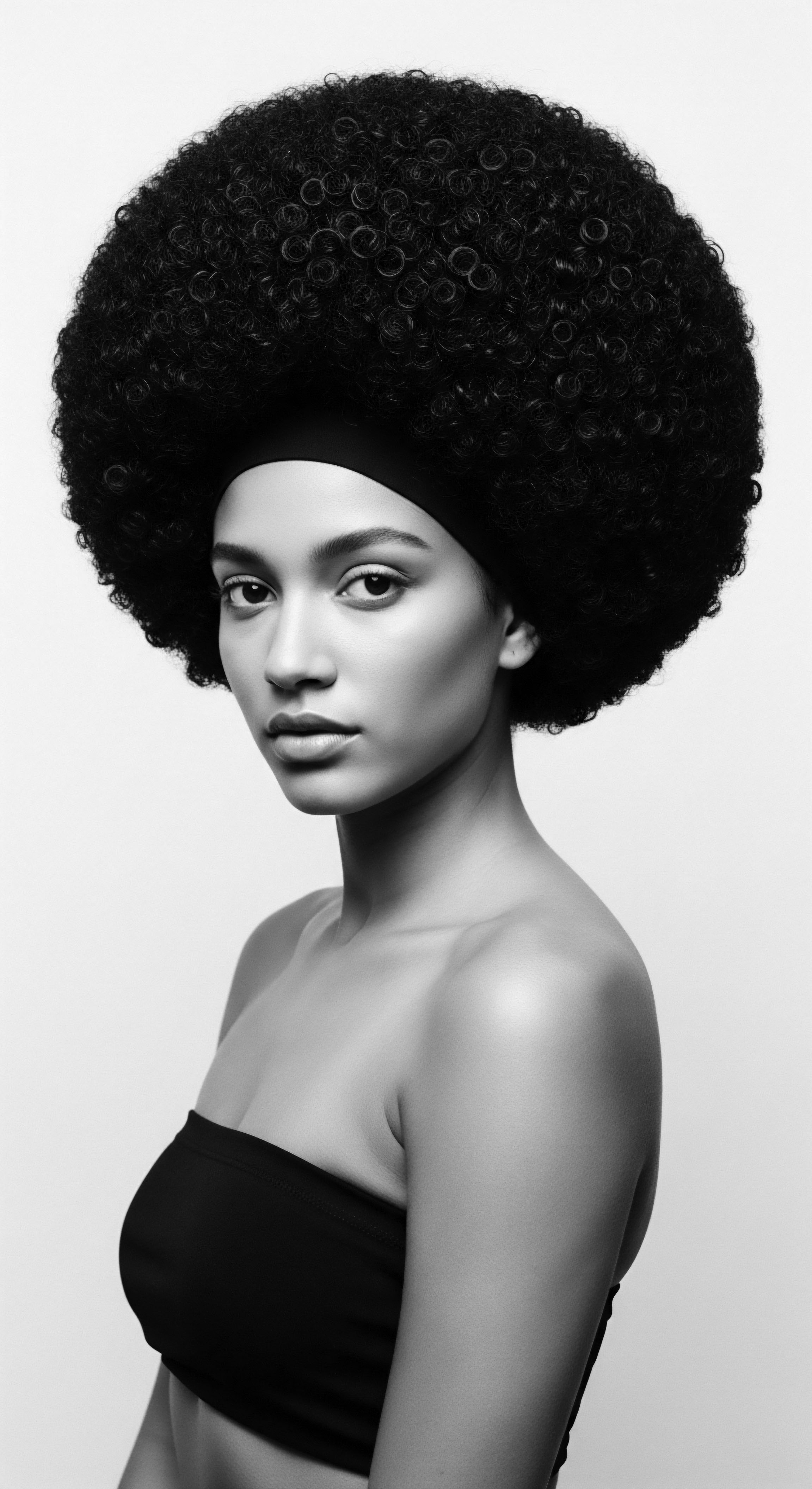
Intermediate
As societies grew more complex, so too did the Societal Hair Norms. What began as organic, community-driven expressions of identity and practicality gradually became formalized, sometimes even weaponized. The historical trajectory of textured hair, particularly within the context of transatlantic enslavement and colonialism, stands as a clear indicator to this evolution.
The designation of what constituted “acceptable” hair became intertwined with power dynamics, often used to assert dominance and diminish the humanity of subjugated peoples. The significance of these norms shifted dramatically under oppressive systems.
The interpretation of hair’s meaning, once a source of communal pride, became a tool of control. Hair that naturally defied Eurocentric ideals of straightness and pliability was deemed unruly, unprofessional, or even savage. This significant alteration in societal perception had lasting consequences, impacting self-perception and economic opportunity for generations.
The collective understanding of hair was reshaped by external forces, creating new implications for those with textured hair. This period marked a profound disruption, where the very biology of textured hair was pathologized, leading to centuries of struggle for recognition and acceptance of its natural form.

The Mark of Colonialism
The arrival of European colonizers in Africa and the Americas introduced a starkly different set of hair norms, rooted in a concept of beauty that prioritized straight, fine hair. This imposed aesthetic, often enforced through violence and cultural erasure, sought to dismantle existing ancestral hair traditions. The very act of tending to textured hair using ancestral methods became a quiet, powerful assertion, a gentle refusal to yield the ancestral wisdom that resided within each coil. This historical period offers a clarification of how external powers can redefine collective hair expectations.
Colonialism drastically reshaped Societal Hair Norms, imposing Eurocentric beauty ideals that devalued textured hair and disrupted ancestral traditions.
Consider the infamous Tignon Laws enacted in Spanish colonial Louisiana in 1786. These laws mandated that free women of color, renowned for their elaborate and beautiful hairstyles, cover their hair with a tignon or handkerchief. This legal imposition was not about modesty; it was a direct attempt to diminish their perceived beauty and social status, particularly as they were gaining economic and social standing. The directive aimed to differentiate them visually from white women, thereby reinforcing racial hierarchies.
The intention behind these laws was to suppress a vibrant expression of identity, reducing the power of hair as a visual statement. This historical moment serves as a poignant example of how legal frameworks can codify and enforce discriminatory societal hair norms, transforming hair from a source of pride into a symbol of oppression.
| Aspect Meaning |
| Pre-Colonial African Hair Traditions Symbol of status, age, marital status, tribal affiliation, spirituality, beauty, and communal belonging. |
| Colonial Imposed Norms (on Textured Hair) Marker of perceived inferiority, wildness, lack of civilization; a feature to be hidden or altered to conform. |
| Aspect Care Practices |
| Pre-Colonial African Hair Traditions Communal rituals, use of natural oils, butters, and herbs (e.g. shea butter, black soap, various plant extracts), focusing on nourishment and health. |
| Colonial Imposed Norms (on Textured Hair) Introduction of chemical straighteners, harsh combs, and tools designed for European hair textures, often causing damage and scalp irritation. |
| Aspect Styling |
| Pre-Colonial African Hair Traditions Elaborate braids, coils, twists, locs, often adorned with cowrie shells, beads, and gold, reflecting social roles and artistic expression. |
| Colonial Imposed Norms (on Textured Hair) Pressure to straighten hair, conform to smooth, pulled-back styles, or cover natural texture, leading to cultural suppression. |
| Aspect The profound contrast highlights how Societal Hair Norms can be transformed from expressions of heritage into instruments of oppression, requiring deep resilience. |
This historical example illustrates the profound impact of imposed societal hair norms. The delineation of acceptable appearance became a mechanism of control, directly targeting the inherent beauty and cultural significance of textured hair. The suppression of natural hair became a pervasive and insidious form of subjugation, forcing generations to navigate a world that often demanded they deny a part of themselves for acceptance.
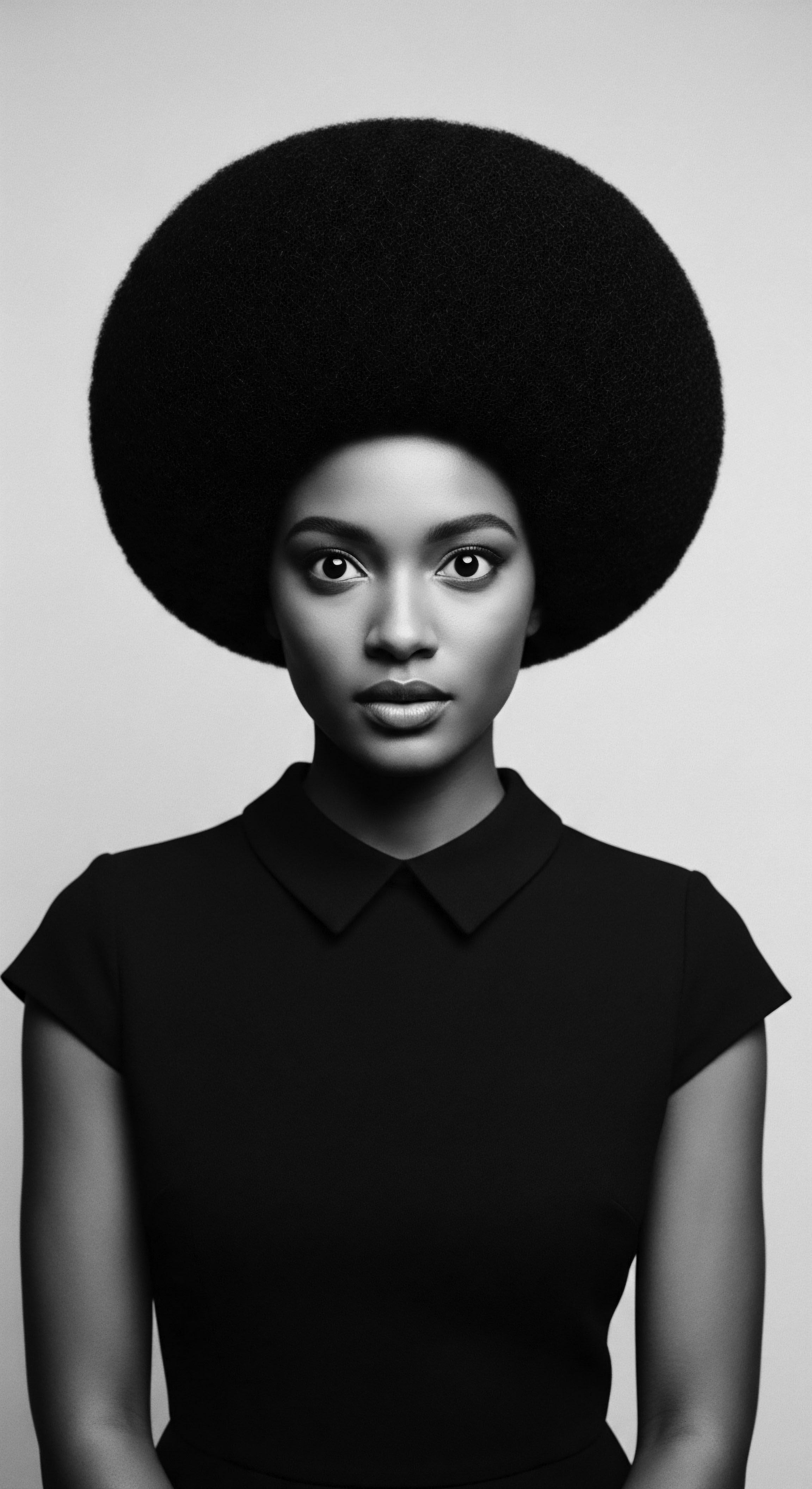
Hair as Resistance
Despite centuries of attempts to erase or diminish the natural hair aesthetic, communities with textured hair have consistently used their hair as a powerful medium of resistance and self-affirmation. During enslavement, enslaved Africans often braided rice and seeds into their hair before escaping, using their styles as maps or sustenance for their perilous journeys to freedom. These practices, born of desperation, became acts of ingenious self-preservation, silent statements against the very norms that sought to bind them. The very substance of these acts was rebellion, a quiet, powerful assertion of identity against overwhelming odds.
In the 20th century, the Civil Rights Movement and the Black Power Movement saw a resurgence of natural hairstyles, particularly the Afro. This was not merely a fashion trend; it was a potent political statement, a declaration of Black pride and a rejection of Eurocentric beauty standards. The Afro became a visual manifestation of liberation, a symbol of solidarity and a powerful counter-narrative to imposed societal hair norms.
The significance of this style transcended mere aesthetics, becoming a symbol of self-determination, a visible refusal to conform to oppressive ideals. This movement brought the meaning of hair back to its ancestral roots of pride and cultural identity.
- The Afro ❉ A symbol of Black pride and a clear assertion against assimilation during the 1960s and 70s, representing a collective identity.
- Cornrows & Braids ❉ Reclaimed as expressions of cultural heritage and artistry, often defying corporate dress codes and asserting a connection to ancestral styling.
- Locs ❉ Representing spiritual connection, natural growth, and a rejection of conventional beauty ideals, often signifying a deep personal and cultural commitment.
Each of these styles, in its own time, has served as a powerful counterpoint to dominant societal hair norms, reaffirming the inherent beauty and versatility of textured hair. They stand as enduring testaments to resilience and cultural preservation, offering a powerful interpretation of freedom through hair. The ongoing journey of textured hair is one of reclaiming space, redefining beauty, and honoring a rich ancestral legacy, proving that the collective understanding of hair can indeed be shifted through persistent, purposeful action.
The contemporary natural hair movement continues this legacy, adapting ancestral practices with modern understanding. Social media platforms have become virtual gathering spaces, allowing individuals to share knowledge, celebrate diverse textures, and challenge lingering biases. This digital community reinforces the notion that societal hair norms are not static; they are living, breathing entities, subject to continuous re-evaluation and transformation by those who refuse to be confined by outdated standards. The current moment represents a powerful reaffirmation of ancestral beauty and a collective push for wider acceptance.
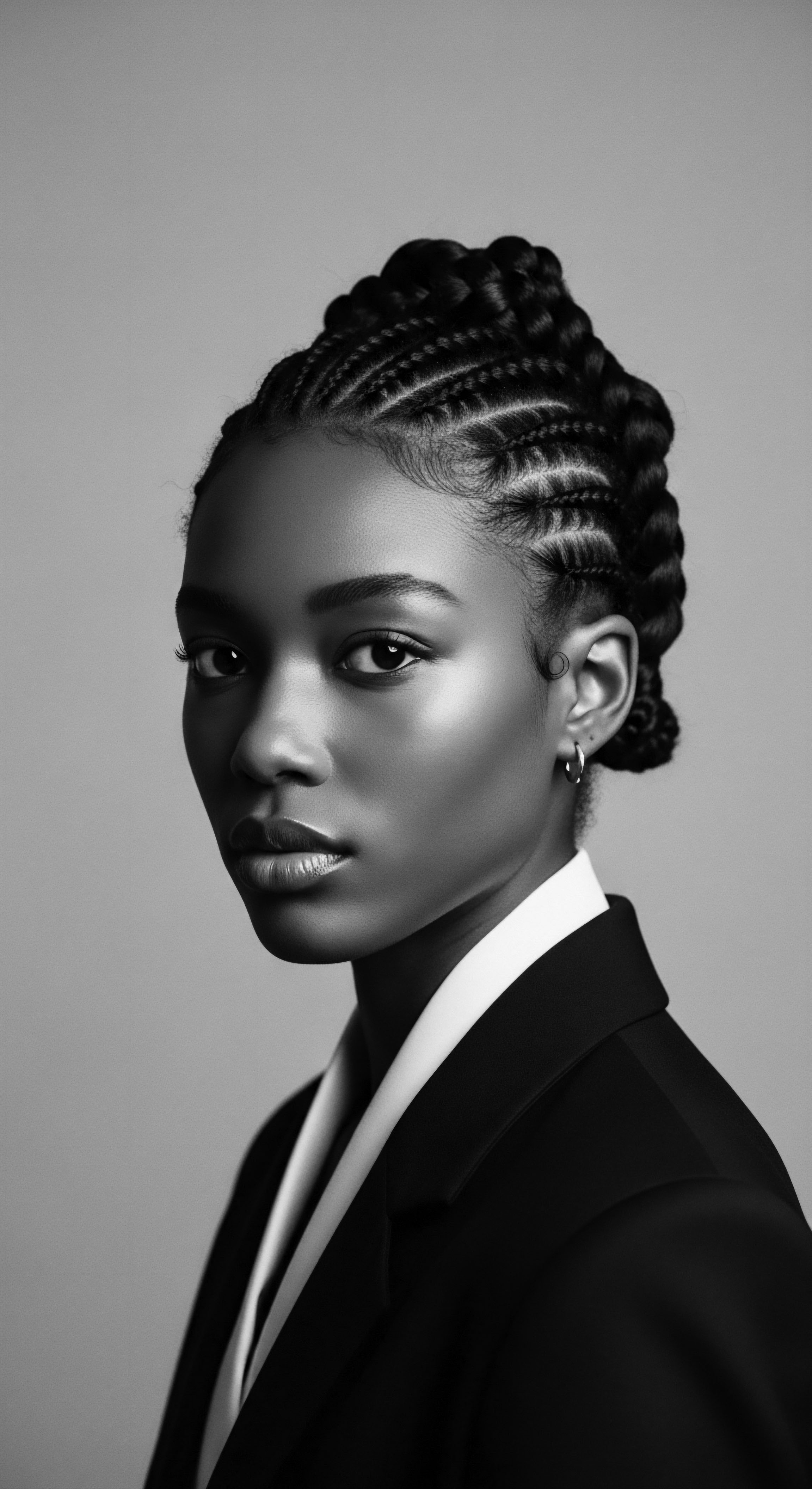
Academic
The Societal Hair Norms represent a complex, historically contingent system of collective expectations and prescribed aesthetic ideals concerning hair presentation, deeply intertwined with cultural values, power structures, and individual identity formation. This conceptual framework extends beyond superficial aesthetic preferences to encompass the socio-economic, psychological, and political implications of hair within a given community. Its delineation necessitates a viewpoint encompassing various disciplines, drawing from sociology, anthropology, psychology, and critical race theory to examine its pervasive influence, particularly on marginalized communities. The meaning of these norms is multifaceted, reflecting deep-seated cultural anxieties and aspirations.
For individuals with textured hair, particularly those of African descent, the Societal Hair Norms have historically operated as a mechanism of social control and a site of enduring struggle. The imposition of Eurocentric beauty standards has frequently pathologized natural Black hair, labeling it as unprofessional, unkempt, or undesirable. This systematic devaluation has significant long-term consequences, affecting educational opportunities, career trajectories, and mental well-being.
The interpretation of hair as a marker of conformity or rebellion has significant implications for individual agency and collective identity. The explication of these norms reveals their powerful, often insidious, role in society, creating a landscape where hair becomes a battleground for belonging and self-worth.
The historical trajectory of these norms demonstrates a clear pattern ❉ those in positions of power often define what is considered “normal” or “beautiful,” thereby marginalizing those who do not conform. This process is not accidental; it is a deliberate, albeit sometimes subconscious, reinforcement of existing social hierarchies. The implications for textured hair are particularly stark, as its natural form often stands in direct opposition to these imposed ideals.
This creates a pervasive tension, where the very act of existing with natural hair can be perceived as a challenge to established order. The substance of this tension lies in the clash between inherited cultural expression and imposed aesthetic conformity.
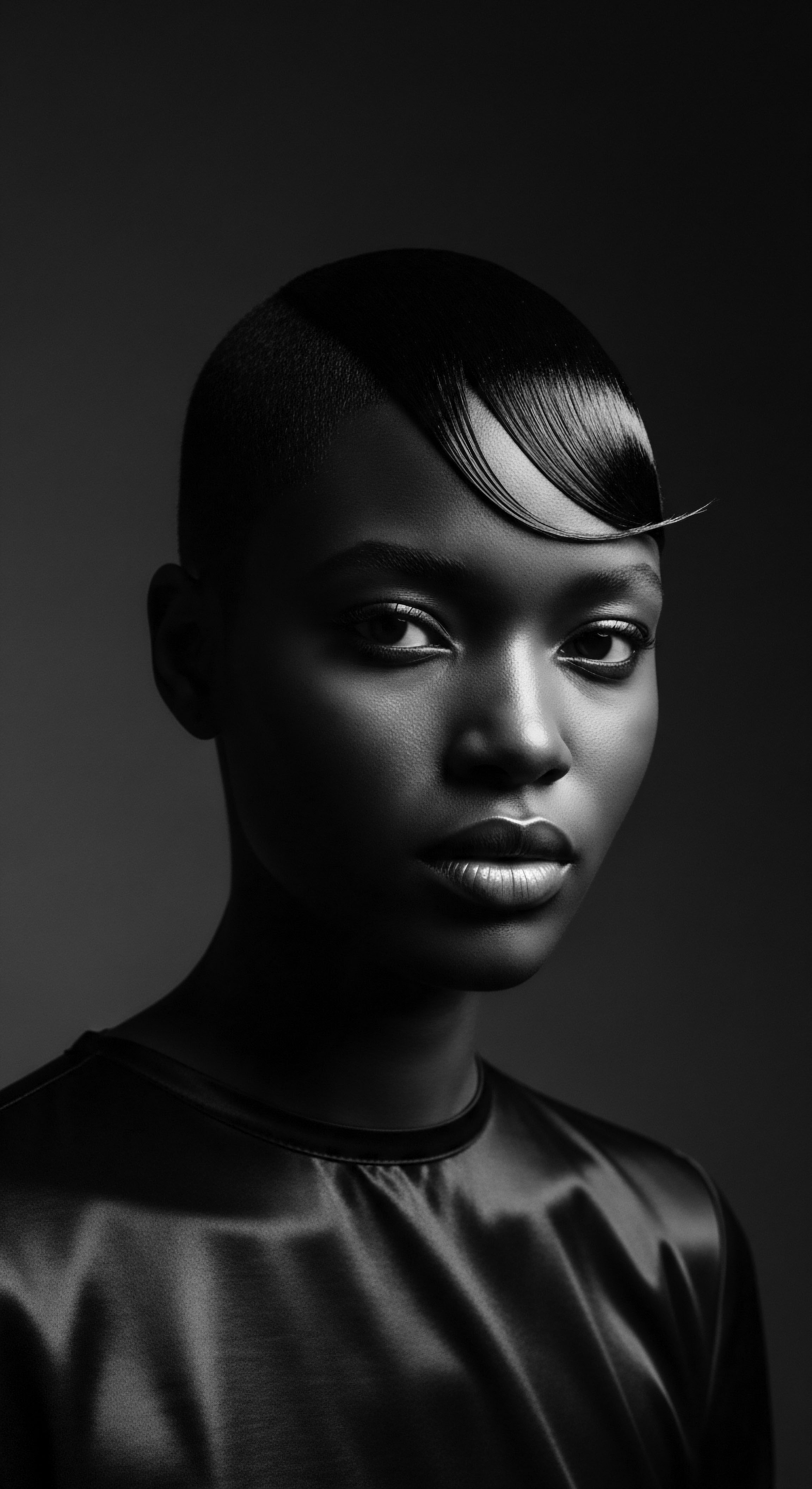
The Psychological Echoes of Conformity
The persistent pressure to conform to dominant Societal Hair Norms can exact a significant psychological toll. Research indicates that Black women, in particular, face disproportionate scrutiny and discrimination related to their hair in professional and educational settings. This creates a double bind ❉ either alter one’s natural hair, often through damaging chemical or heat processes, to fit a Eurocentric ideal, or risk facing bias and exclusion.
The substance of this pressure is a constant negotiation of self and societal expectation, leading to chronic stress and identity conflict. The meaning of self-presentation becomes a source of anxiety rather than empowerment.
The psychological burden of Societal Hair Norms often forces individuals with textured hair to choose between authentic self-expression and societal acceptance, leading to measurable distress.
A notable study published in the Journal of Social Psychology by Roberts and Glick (2018) revealed that Black women who wore natural hairstyles were perceived as less professional and less competent in hiring simulations compared to Black women with straightened hair or white women with straight hair. This perception gap, grounded in implicit bias, demonstrates the tangible discriminatory impact of prevailing Societal Hair Norms. The study found that “Black Women with Natural Hairstyles Received Lower Scores on Professionalism and Competence from Evaluators, Even When All Other Qualifications Were Identical” (Roberts & Glick, 2018, p. 245).
This statistic underscores the insidious nature of hair discrimination, which operates not just as a personal slight but as a systemic barrier to socio-economic mobility. The designation of hair as a factor in professional evaluation highlights a pervasive societal issue, impacting economic justice and equity.
The long-term consequences of such systemic biases are considerable. Individuals may internalize negative perceptions of their natural hair, leading to diminished self-esteem, body image issues, and increased stress. The constant need to manage societal expectations around hair can also lead to significant financial burdens associated with chemical treatments, wigs, or weaves, further impacting economic well-being.
This creates a cycle where the very essence of self is challenged by external, often discriminatory, expectations. The psychological weight of this constant negotiation can lead to what scholars term “hair-related stress” or “hair-based racial discrimination stress,” impacting mental health and overall quality of life (Banks, 2000).
Moreover, the subtle, daily microaggressions related to hair—unsolicited touching, inappropriate comments, or questions about its authenticity—contribute to a cumulative burden. These seemingly small interactions reinforce the message that natural textured hair is somehow abnormal or requires explanation. This constant invalidation chips away at an individual’s sense of belonging and acceptance, creating a perpetual state of vigilance. The interpretation of these daily encounters often leads to feelings of alienation, further solidifying the detrimental psychological effects of restrictive societal hair norms.
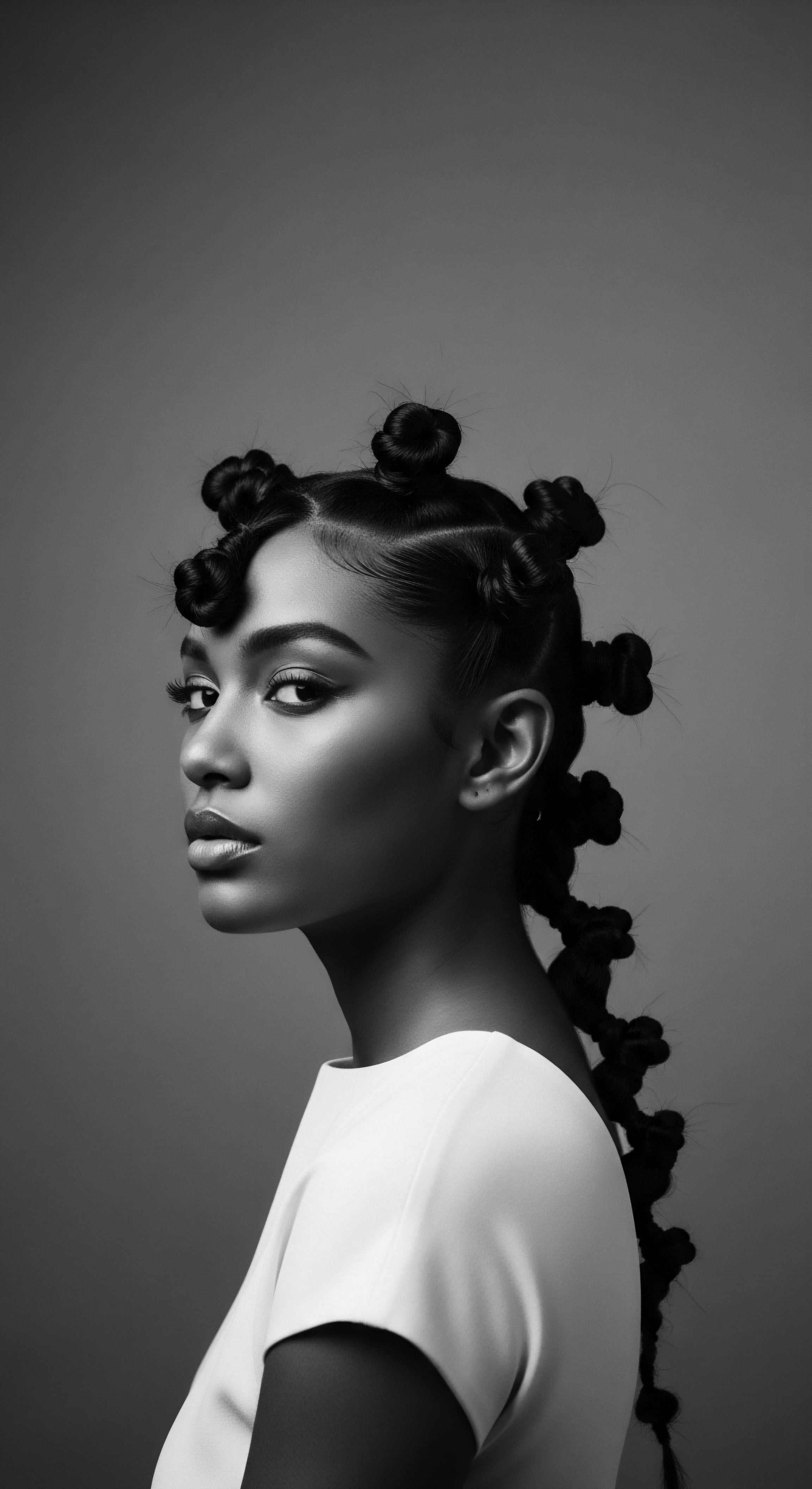
Ancestral Wisdom as Counter-Narrative
Despite the pervasive influence of oppressive Societal Hair Norms, ancestral hair practices and wisdom continue to serve as a powerful counter-narrative, a source of resilience and cultural affirmation. These practices, passed down through generations, often embody a holistic approach to hair care that prioritizes health, community, and spiritual connection over conformity to external ideals. The inherent meaning of these practices transcends mere aesthetics, linking individuals to a rich, unbroken lineage. This living heritage provides a vital anchor in a world that often seeks to displace it.
For centuries, African communities developed sophisticated hair care rituals using indigenous plants and natural ingredients. For instance, the use of Chebe Powder by the Basara women of Chad, a tradition dating back generations, is a prime example. This blend of natural herbs and spices is applied to the hair to retain moisture, strengthen strands, and promote length retention.
This practice is not simply about physical hair health; it is a communal ritual, often performed by women for women, fostering bonds and preserving cultural knowledge. The clarification of such practices reveals a deep connection to heritage and well-being, demonstrating a sustainable, ancestral approach to hair care that modern science is only now beginning to fully appreciate.
The continued practice of these ancestral methods, even in the face of dominant beauty standards, represents an active resistance and a profound affirmation of cultural identity. It demonstrates that the definition of beauty and proper hair care can be reclaimed and redefined from within the community, drawing strength from historical precedent. The interpretation of hair care, in this context, becomes an act of self-sovereignty, a declaration of cultural pride that resists external impositions. This resilience is not merely about preserving old ways; it is about adapting them, making them relevant for contemporary life while retaining their original spirit.
| Traditional Practice/Ingredient Chebe Powder (Chad) |
| Ancestral Context & Use Used by Basara women for moisture retention and hair strengthening; communal application rituals passed down through generations. |
| Contemporary Scientific Insight (where Applicable) Rich in saponins, which cleanse gently, and antioxidants, supporting scalp health and minimizing breakage, confirming its efficacy. |
| Traditional Practice/Ingredient Shea Butter (West Africa) |
| Ancestral Context & Use Applied for centuries as a moisturizer, protectant, and sealant for hair and skin, often used in family hair rituals. |
| Contemporary Scientific Insight (where Applicable) Contains fatty acids and vitamins A, E, and F, providing deep conditioning, anti-inflammatory properties, and natural UV protection. |
| Traditional Practice/Ingredient Aloe Vera (Various African & Indigenous Cultures) |
| Ancestral Context & Use Used for soothing scalp irritation, promoting growth, and conditioning hair, valued for its healing properties. |
| Contemporary Scientific Insight (where Applicable) Contains proteolytic enzymes that repair dead skin cells on the scalp, acting as a great conditioner and promoting healthy hair growth. |
| Traditional Practice/Ingredient Hibiscus (West Africa, India) |
| Ancestral Context & Use Used as a natural hair cleanser, conditioner, and to prevent hair loss, often prepared as a rinse or paste. |
| Contemporary Scientific Insight (where Applicable) Rich in amino acids and vitamins, stimulating blood circulation to the scalp, promoting hair growth, and preventing premature graying. |
| Traditional Practice/Ingredient African Black Soap (West Africa) |
| Ancestral Context & Use Traditional cleanser made from plantain skins, cocoa pods, and shea tree bark; used for hair and body. |
| Contemporary Scientific Insight (where Applicable) Natural source of vitamins and minerals, gently cleanses without stripping natural oils, maintaining scalp balance. |
| Traditional Practice/Ingredient These examples highlight how ancestral wisdom regarding hair care often aligns with modern scientific understanding, reinforcing the profound value of heritage and traditional ecological knowledge. |
The ongoing revitalization of these practices, often shared and adapted within global diasporic communities, represents a powerful movement of cultural reclamation. It is a conscious choice to honor ancestral methods, not out of blind adherence, but from a deep understanding of their efficacy and their inherent connection to identity. This movement not only counters the historical devaluation of textured hair but also provides a framework for holistic wellness that extends beyond mere appearance, touching upon spiritual and communal well-being. The essence of this movement is a return to self, rooted in collective memory.
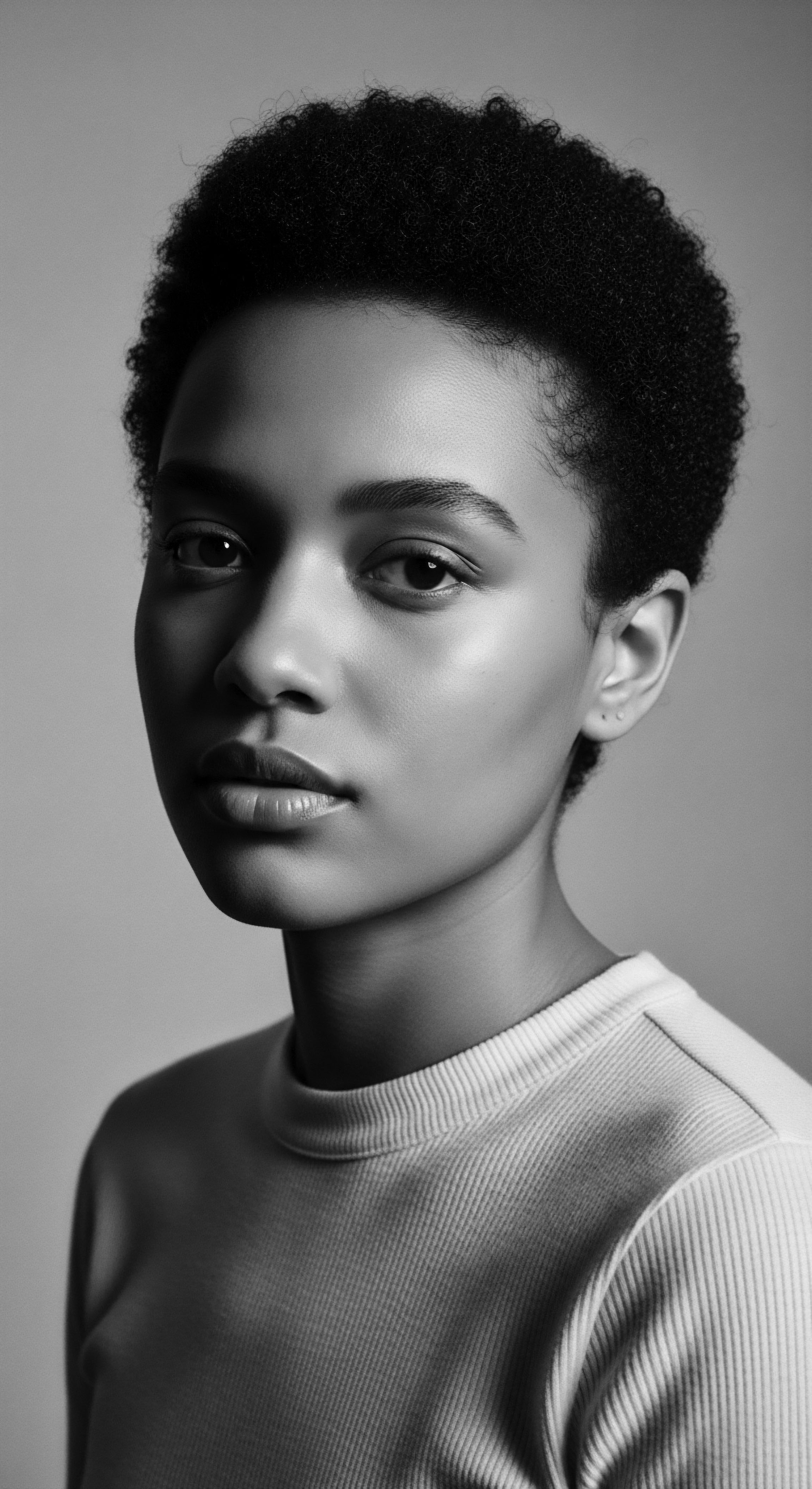
The Economics of Appearance and Systemic Change
Beyond the psychological, Societal Hair Norms also manifest in significant economic dimensions. The beauty industry, particularly the segment catering to Black hair, is a multi-billion dollar enterprise, often driven by the very norms that pressure individuals to alter their natural hair. Products designed for straightening, relaxing, or concealing natural texture have historically dominated the market, creating a lucrative cycle of demand fueled by societal pressures. The commercial implications of these norms are vast, shaping both consumer behavior and industry practices, often perpetuating a cycle of dependency on chemical alterations.
The historical context reveals how this economic landscape was shaped. The early 20th century saw the rise of self-made entrepreneurs like Madam C.J. Walker, who, while providing products for Black women, also operated within a framework where straightened hair was often seen as a necessity for social acceptance. Her work, while empowering in its economic independence, also reflects the prevailing societal hair norms of her era (Byrd & Tharps, 2014).
This complex legacy underscores how economic opportunities can emerge even within restrictive systems, yet still reflect the underlying societal pressures. The interpretation of historical business models within the hair industry reveals a continuous negotiation with dominant beauty ideals.
The recent growth of the natural hair movement has spurred a shift, with increasing demand for products that support and celebrate textured hair. However, even within this shift, the economic landscape reflects the enduring legacy of historical norms. Natural hair products can sometimes be more expensive, and the labor-intensive nature of some natural styles can also represent a significant time investment.
The ongoing struggle for hair freedom, therefore, has both cultural and economic dimensions, impacting individuals’ wallets as well as their self-perception. The delineation of hair-related expenditures often mirrors the broader economic disparities influenced by race and appearance, revealing a persistent form of economic marginalization.
The societal value placed on certain hair types directly influences market forces, creating an involved interaction between identity, commerce, and collective expectation. The pursuit of conformity, or the rejection of it, carries a tangible economic weight for individuals and communities. This connection between appearance and financial standing offers a further explication of the reach of societal hair norms. Legislative efforts, such as those that seek to ban hair discrimination in workplaces and schools, represent crucial steps towards dismantling these economically damaging norms.
These laws acknowledge that hair discrimination is a form of racial discrimination, aiming to level the playing field and allow individuals to present themselves authentically without fear of professional or educational repercussions. The substance of these legal protections is to ensure equitable opportunity, freeing individuals from the economic burden of hair alteration.
The implications of these academic insights are clear ❉ understanding Societal Hair Norms requires moving beyond superficial discussions of beauty. It demands an examination of power, history, psychology, and economics. Only by acknowledging the deep-seated mechanisms through which these norms operate can we genuinely work towards a future where all hair textures are celebrated, and individuals are free to express their heritage without fear of judgment or penalty. This comprehensive understanding forms the foundation for true hair liberation, a liberation that honors ancestral wisdom and fosters genuine self-acceptance for every strand.
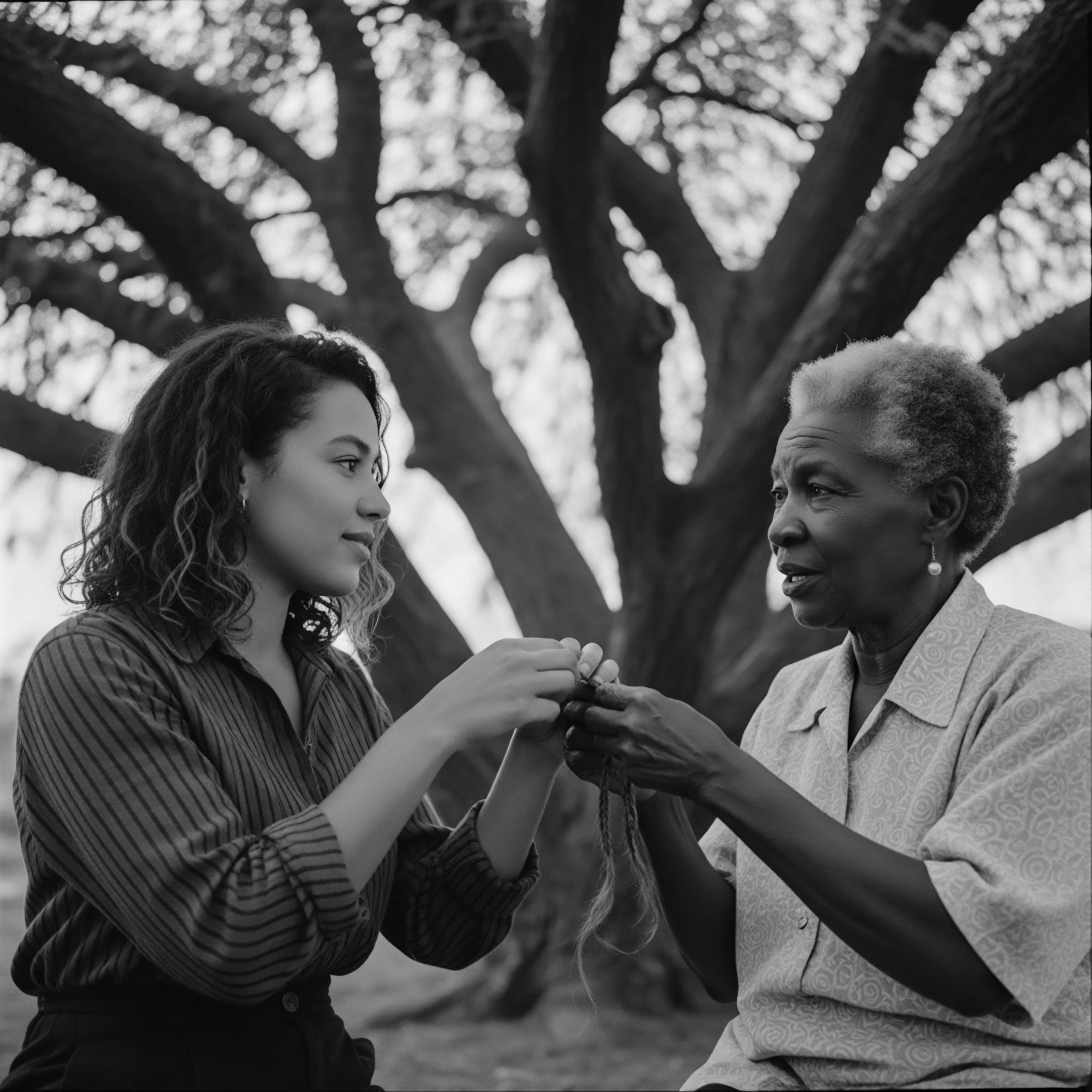
Reflection on the Heritage of Societal Hair Norms
As we trace the intricate pathways of Societal Hair Norms, from their elemental beginnings in communal expression to their complex intersections with power, prejudice, and perseverance, a singular truth resides ❉ hair is never merely hair. For those whose heritage is etched into the very coils and kinks of their strands, hair is a living archive, a testament to ancestral ingenuity, enduring spirit, and a continuous dialogue with the world. The Soul of a Strand, therefore, is not a static concept but a vibrant, breathing entity, carrying the weight of history and the promise of future freedom.
The journey from the “Echoes from the Source,” where hair served as a pure language of belonging, to “The Tender Thread” of care and community, often strained by external pressures, and finally to “The Unbound Helix,” where identity asserts itself with renewed vigor, is a powerful testament to resilience. Understanding the Societal Hair Norms is not about judgment but about illumination—shedding light on the mechanisms that have sought to constrain self-expression, and celebrating the myriad ways individuals and communities have reclaimed their narratives through the very fibers of their being. The significance of this understanding extends to every aspect of life, guiding us towards a more equitable and accepting collective future.
In every curl, every braid, every loc, there resides a story. It is a story of survival, of beauty redefined, of ancestral wisdom finding new voice in a contemporary world. Roothea’s ‘living library’ stands as a sanctuary for these stories, a place where the deep meaning of textured hair heritage is honored, studied, and celebrated.
By comprehending the historical and cultural forces that shape our collective perceptions of hair, we move closer to a future where every strand is celebrated for its unique beauty, free from the confines of imposed norms, truly free and genuine. This collective effort ensures that the wisdom of generations past continues to nourish the present and guide the future, securing a lasting legacy of hair freedom and self-acceptance.
The delicate balance between individual expression and collective expectation, when viewed through the lens of heritage, becomes a profound meditation on human dignity. To recognize the profound influence of Societal Hair Norms is to acknowledge the battles fought and the victories won in the ongoing pursuit of self-definition. It is to understand that hair, in its myriad forms, remains a powerful emblem of identity, connection, and liberation, a testament to the enduring spirit of communities who have consistently affirmed their beauty against all odds. The legacy of textured hair, therefore, is not just history; it is a living, breathing narrative that continues to unfold, inspiring future generations to wear their crowns with pride.
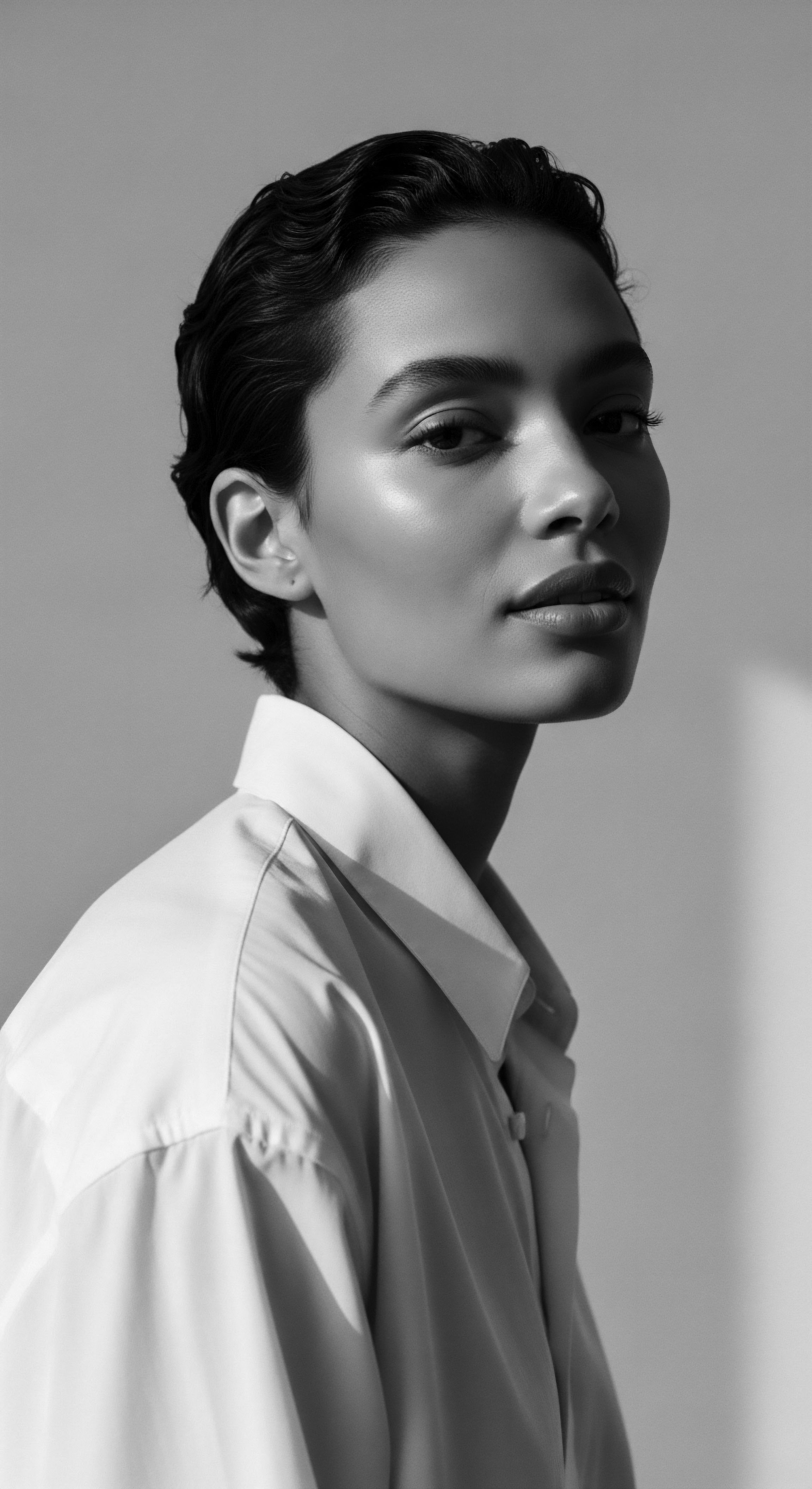
References
- Roberts, L. M. & Glick, P. (2018). The Crown and the Workplace ❉ Perceptions of Professionalism and Competence for Black Women with Natural Hairstyles. Journal of Social Psychology, 158(2), 239-250.
- Byrd, A. D. & Tharps, L. L. (2014). Hair Story ❉ Untangling the Roots of Black Hair in America. St. Martin’s Griffin.
- Mercer, K. (1994). Welcome to the Jungle ❉ New Positions in Cultural and Identity Politics. Routledge.
- Banks, I. (2000). Hair ❉ A Cultural History of Hair Fashion in America. W. W. Norton & Company.
- White, D. (2001). Styling Textured Hair ❉ A Guide to Braiding, Locing, and Natural Hair Care. Milady Publishing.
- Rastogi, S. & Sharma, M. (2013). Herbal Cosmetics ❉ A Comprehensive Review. Journal of Chemical and Pharmaceutical Research, 5(1), 126-141.
- Olusoga, D. (2016). Black and British ❉ A Forgotten History. Picador.
- Ebony, N. (2019). The History of Black Hair ❉ From Ancient Traditions to Modern Styles. National Museum of African American History and Culture.
- Hunter, L. M. (2011). African-American Hair ❉ An Ethnographic Study of Hair and Identity. University Press of Mississippi.
- Cole, S. (2007). Don’t Touch My Hair! ❉ The Politics of Hair in the African Diaspora. New York University Press.
- Okoro, N. (2020). Hair in African Culture ❉ An Examination of its Symbolism and Significance. Journal of African Studies, 43(1), 78-92.
- Patton, T. (2006). Black Hair ❉ Art, Culture, History. University of Mississippi Press.
